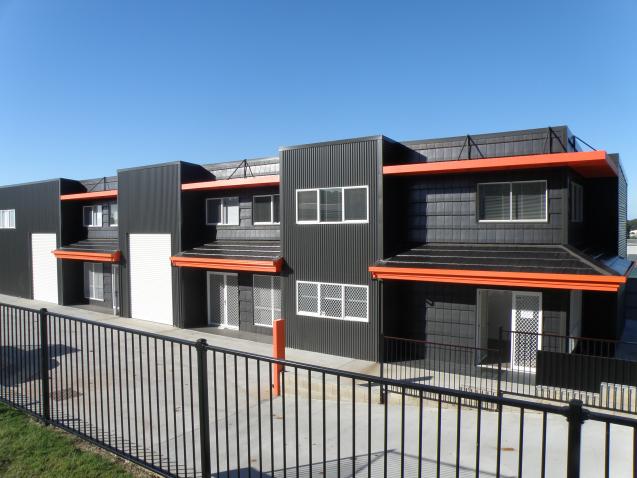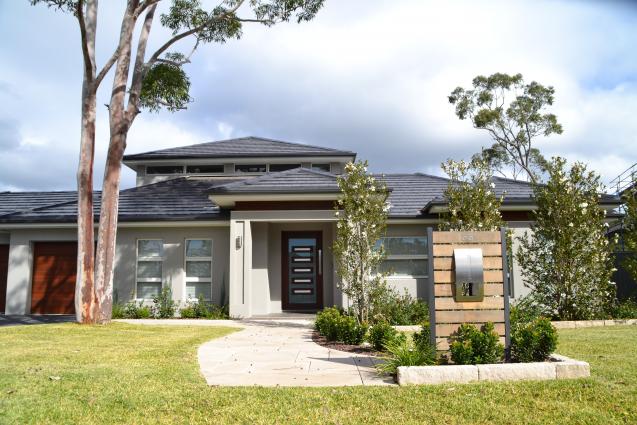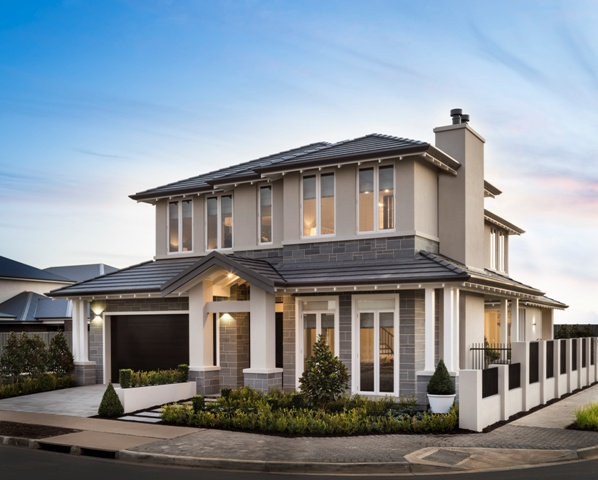
Roof Tiles on the Wall: A Growing Trend in Cladding
By Bristile Roofing|October 02, 2014
Making its start in Europe, this trend has slowly grown to encompass America and now Australia. While the use of roof tiles on walls has been trialled on both commercial and residential constructions around the world, in Australia this building technique has scarcely been trialled with commercial application in the form of Bristile Roofing’s Port Macquarie office being one of the few examples. The Port Macquarie office space makes use of flat terracotta roof tiles across the entirety of its external façade, creating a uniquely textured aesthetic that draws the eye.
In Europe, roof tile wall cladding has been more widely adopted with designers and architects employing it to create striking feature walls and facades. In Ekali, Greece – one of Athens’ oldest regions – talented architect Thanos Athanasopoulos has employed a traditionally curved terracotta roof tile for both the roofing and a single feature wall on a beautiful suburban home. The end result is a truly gorgeous cascading effect that creates a highly effective focal point along the home’s exterior.
In addition to the highly pleasing aesthetic appeal of using roof tiles as wall cladding, they also offer a wealth of insulation properties. Terracotta roof tiles possess immense thermal insulation properties, and, when applied as cladding, can act as a buffer to heat penetration in summer and can aid with heat retention throughout winter. On top of being an excellent thermal insulator, terracotta roof tiles also possess strong acoustic sound proofing properties, making them the ideal cladding material for city living. When used in concert with other high-density building materials, such as concrete masonry, bricks, or other roof tiles, you can easily construct an oasis in the middle of any major city, cutting out traffic, airplane, and storm noise with ease.
As with most cladding options, roof tiles are ideal for renovation projects where the goal is to conceal an unsightly base layer. However, roof tiles have the added benefit of being able to drastically improve the insulation properties of any project to which they are applied. Terracotta roof tiles will also provide a uniform aesthetic that remain one consistent colour for the life of the product. In addition to their aesthetic durability, roof tiles are also resistant to rust and corrosion, non-combustible and fire resistant, making them an ideal long-term choice for cladding.
The wide range of colours, shapes, and styles of terracotta roof tiles available on the market today also affords architects and designers the opportunity to be as creative as possible in their designs.
Roof tiles can be easily affixed to any structural wall. The process involved is much the same as installing a roof with a 90 degree pitch. Each tile is fastened to battens using screws and double fixed in place to ensure rigidity. To improve insulation, it is recommended that sarking or an equivalent thermal protective layer be installed between the tiles and the wall they adorn.
This is a design trend that has been gaining momentum around the world for years and is now preparing to truly take off amongst Australian commercial and residential designs.
In Europe, roof tile wall cladding has been more widely adopted with designers and architects employing it to create striking feature walls and facades. In Ekali, Greece – one of Athens’ oldest regions – talented architect Thanos Athanasopoulos has employed a traditionally curved terracotta roof tile for both the roofing and a single feature wall on a beautiful suburban home. The end result is a truly gorgeous cascading effect that creates a highly effective focal point along the home’s exterior.
In addition to the highly pleasing aesthetic appeal of using roof tiles as wall cladding, they also offer a wealth of insulation properties. Terracotta roof tiles possess immense thermal insulation properties, and, when applied as cladding, can act as a buffer to heat penetration in summer and can aid with heat retention throughout winter. On top of being an excellent thermal insulator, terracotta roof tiles also possess strong acoustic sound proofing properties, making them the ideal cladding material for city living. When used in concert with other high-density building materials, such as concrete masonry, bricks, or other roof tiles, you can easily construct an oasis in the middle of any major city, cutting out traffic, airplane, and storm noise with ease.
As with most cladding options, roof tiles are ideal for renovation projects where the goal is to conceal an unsightly base layer. However, roof tiles have the added benefit of being able to drastically improve the insulation properties of any project to which they are applied. Terracotta roof tiles will also provide a uniform aesthetic that remain one consistent colour for the life of the product. In addition to their aesthetic durability, roof tiles are also resistant to rust and corrosion, non-combustible and fire resistant, making them an ideal long-term choice for cladding.
The wide range of colours, shapes, and styles of terracotta roof tiles available on the market today also affords architects and designers the opportunity to be as creative as possible in their designs.
Roof tiles can be easily affixed to any structural wall. The process involved is much the same as installing a roof with a 90 degree pitch. Each tile is fastened to battens using screws and double fixed in place to ensure rigidity. To improve insulation, it is recommended that sarking or an equivalent thermal protective layer be installed between the tiles and the wall they adorn.
This is a design trend that has been gaining momentum around the world for years and is now preparing to truly take off amongst Australian commercial and residential designs.



